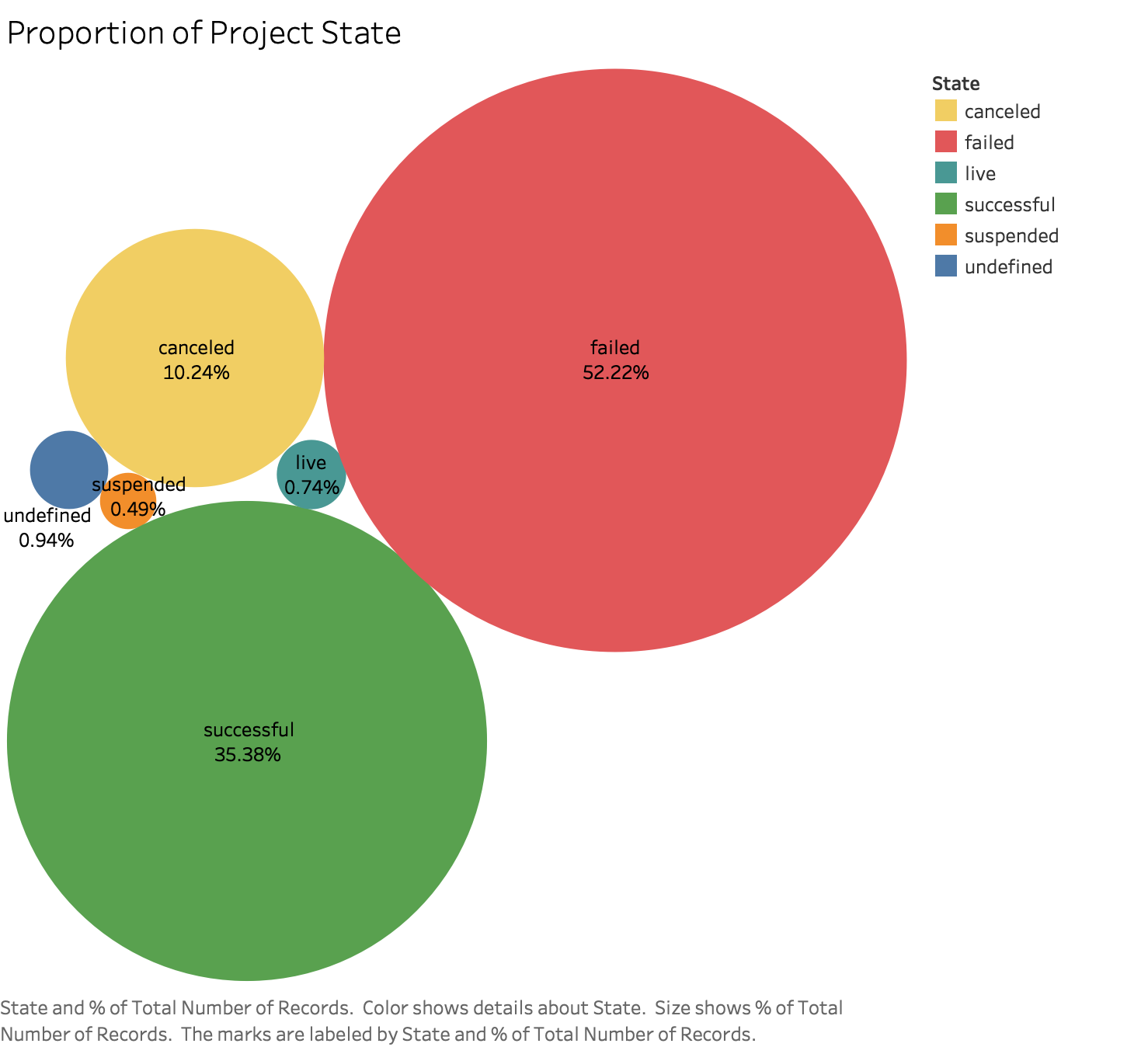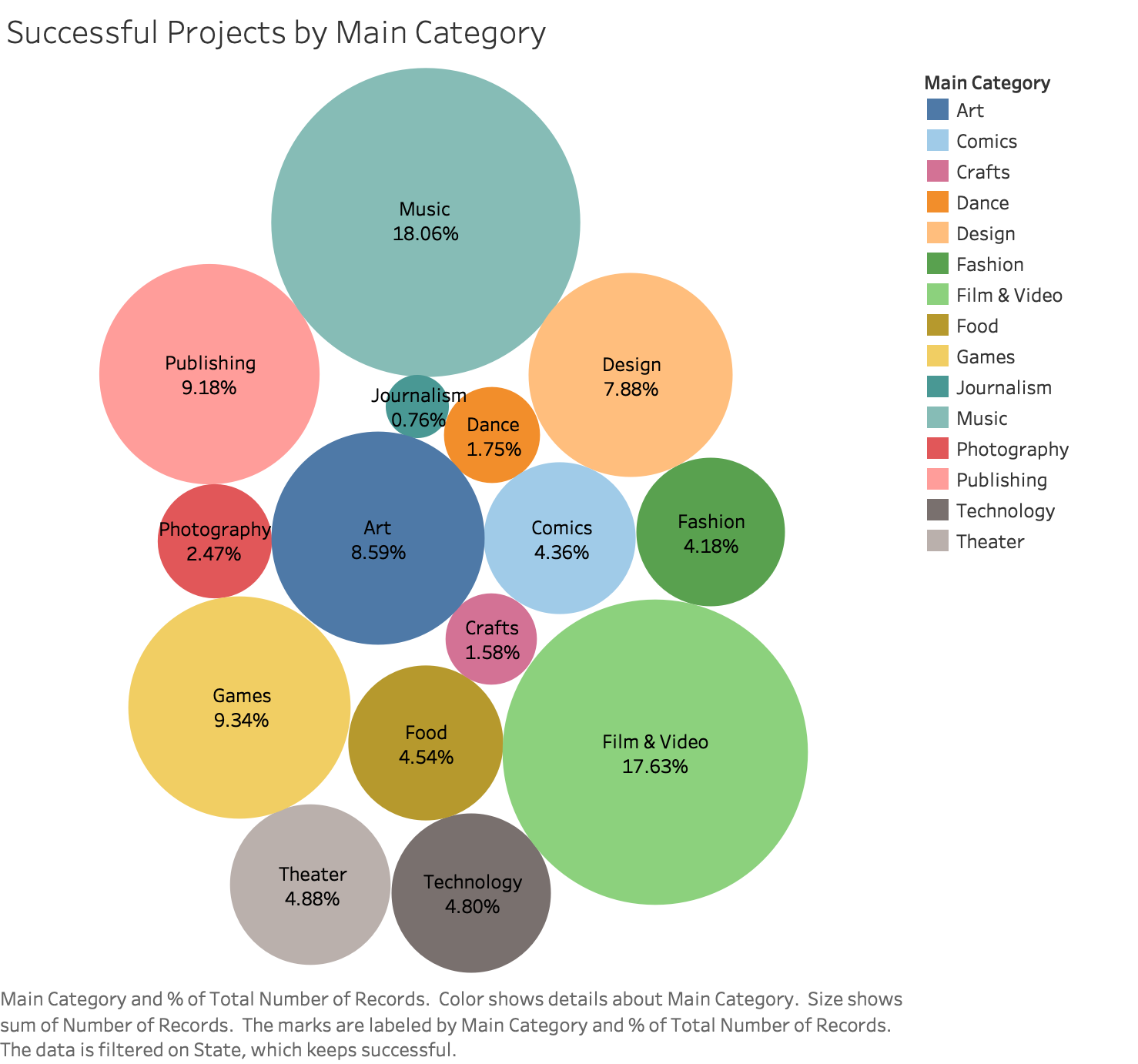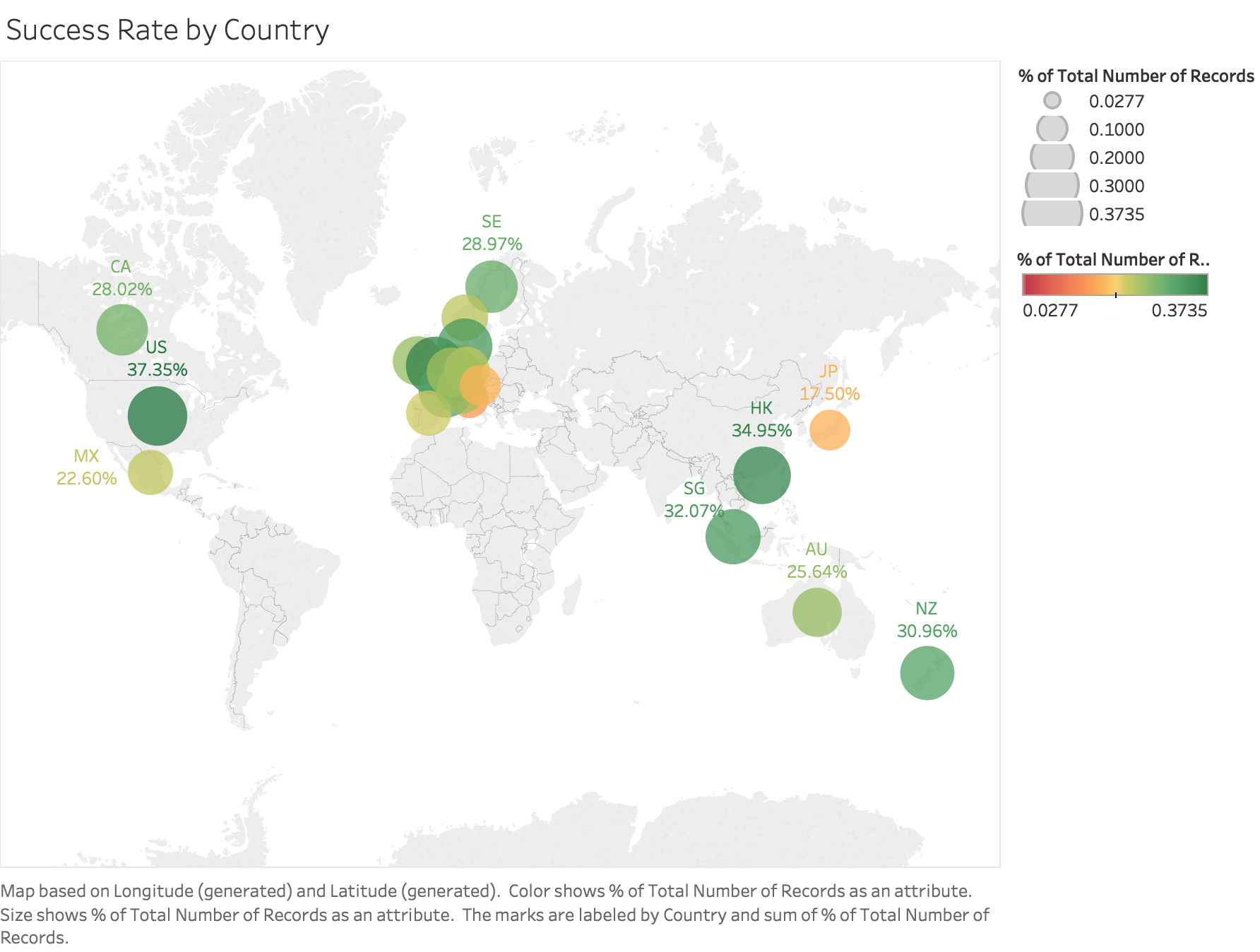Skills
Tableau, Pandas, Matplotlib
Timeline
2 weeks
Team
Zoe Teoh, Bharath Prabhu
Overview
With the rise of technology, creating has never been easier. From prototyping physical products with 3D printers to the development of many other rapid prototyping methodologies, innovation and entrepreneurship amongst members of all generations has scaled to new heights. However very few innovations, if any at all, are successful and able to impact real societal change. Therefore this leads to a question borne out of our team’s curiosity, which is what kind of ideas do turn to reality? Is it possible to tell, given some features of ideas, as to whether they will become successful?
This problem has a unique significance in that many successful ideas and innovations vary in scope and size. Larger startups have the ability to seek out venture capitalists for angel funding whereas smaller startups may not have that luxury. But does that necessarily mean that the idea won’t become successful? Thus, our team decided to look into Kickstarter, an online platform that crowdfunds ideas of all sizes and scopes.
Through this project, we hope to gain a better understanding of the nature of startups that tend to attract attention, funding and become successful and hopefully use that for our own startups someday!
Spotify Data



Which main/sub categories have the greatest success?
%20-%20All%20Subcategories.png)
%20-%20All%20Main_Sub%20Categories.png)
How does the Goal Amount affect Success?
Chiptune leads the way in success, both in terms of % of successful projects as well as having a healthy 'average percent of goal' reached. Chiptune is known as 8-bit music and is a form of electronic music. Therefore we can see that even in other catgories such as music, technology seems to have permeated through to project ideas, supporting our intuition of technological advances being the fulcrum of innovation, before the project
As you move down the graph, you will notice that the 'average percent of goal' reached for successful projects increase on average compared to the initial few subcategories. I think this is an extremely interesting finding as it gives us a cursory understanding of human behaviour on these crowdsourcing platforms explained below
People, in general, look for maximum reward with minimal risk
Therefore we see that perceived 'high risk' sub-categories that are part of technology are at the bottom of the graph with low success rates. However the projects that are successful have a high 'average percent of goal reached' because those projects are truly perceived by consumers to be revolutionary
%20(7).png)
%20(8).png)
%20(9).png)
Does Launch Date affect success?
Our finding is not suprising and is in fact expected as in crowdfunding platforms, ventures are backed by general consumers who have minimal capital or savings and thus are more comfortable making smaller contributions as opposed to larger expensive ones. Therefore the larger the scope of the project gets, the more apprehensive a consumer might feel in backing the project
%20State%20by%20Year.png)
%20State%20by%20Month.png)
%20State%20by%20Week%20No.png)
Does Time Duration affect success?
The reason for the above phenomenon is that, during the summer holidays (right around Weeks 27 - 29), many young people, particularly students, use that time to brainstorm new ideas and test their idea in an open marketplace. That is one of the main reasons we see a huge spike in the summer months, but more importantly, a much larger spike in failures than in successes. This is also not surprising and perhaps should be expected considering that 25-34 is the predomiant age group that uses KickStarter.
Furthermore the decline towards the end of the year with a spike in the beginning is not surprising as new ventures would be affected by factors such as the Thanksgiving, Christmas and New Year holidays
%20State%20by%20Year.png)
.png)
.png)
Which country has the highest success rate of projects?
The above heat map depicts the percentage of all KickStarter projects of each country happening around the world and their respective succcess rates. From the above map we can see that developed countries with vibrant startup hubs like the United States, Singapore, Hong Kong and a few Western European countries have a far higher success rate with a larger number of projects than many other countries.
What is unique about the above heat map, in particular is Japan. Although Japan is a highly developed country with a substantial proportion of KickStarter projects, these projects, on average, are not as successful as those of other developed countries. One of the main reasons behind this, is traditional Japanese values that emphasize hardwork, role committment and loyalty to company and work. Therefore the startup scene in a modern economy like Japan is not as vibrant as many other countries.
